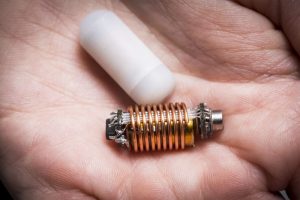
Is this the way of the future for health practitioners interested in patients’ digestion…?
“The team developed an ingestible electronic capsule to monitor gas levels in the human gut. When it’s paired with a pocket-sized receiver and a mobile phone app, the pill reports tail-wind conditions in real time as it passes from the stomach to the colon…The authors are optimistic that the capsule’s gas readings can help clear the air over the inner workings of our intricate innards and the multitudes of microbes they contain. Such fume data could clarify the conditions of each section of the gut, what microbes are up to, and which foods may cause problems in the system. “
Move over breath tests – here comes gas tracking at the other end! I’ve been known to say, ‘A windy gut is a happy gut’ (within reason!!) and now we have the Arsetechnica...(almost) to prove it! But seriously, this is a fascinating technological development for the monitoring of your gut gas production, which will add a whole new layer to our understanding of the microbiota from a more functional perspective.
All fart jokes aside, you might be surprised by some of their initial findings on high, low and moderate fibre diets…with the suggestion that fibre intake at 50g/d produced deleterious effects on colonic anaerobes due to the high level of O2 emissions!
Less surprising was the fact that the ‘low fibre’ regime (15g/d) resulted in extraordinary increases in transit time: “The pill took a little more than three days to work its way out. It spent 13 hours in the stomach, 5.5 in the small intestines, and a whopping 54 in the colon. In fact, about 36 hours after taking the pill, the man was given a high dose of fiber to try to move things along”
The article is a gas….it’s worth the read! 😉
Rachel’s Master Diagnostics Pack will make sure you get the most detailed understanding out of all the test results your patients already have! Rachel presents diagnostics in a truly fun accessible way that’s immediately relevant to every integrative practitioner.
